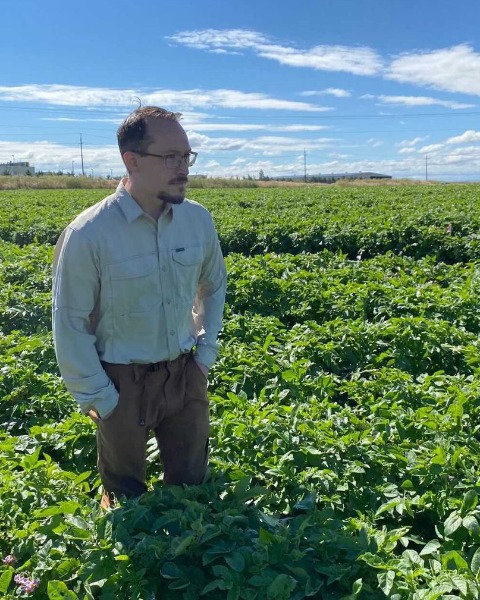Student 10-Minute Presentation
Plant-Insect Ecosystems
Student
Student Competition
Grad 10-min Competition: P-IE, Biocontrol - Pathogens
Improvements to the use of entomopathogenic biocontrol agents against the vine mealybug, Planococcus ficus (Signoret)
Monday, November 11, 2024
8:36 AM - 8:48 AM MST
Location: Phoenix Convention Center, 127 B, PCC

Alexander Maxwell Butcher
Graduate Fellow
Oregon State University
Albany, Oregon
Vaughn Walton
Professor
Oregon State University
Corvallis, Oregon
Presenting Author(s)
Co-Author(s)
Planococcus ficus is a cryptic pest of vineyards worldwide. It was first detected in Jackson County Oregon in 2022. Early season control of this pest can be particularly challenging for insect biocontrol agents as they are partially protected under the bark or soil. Entomopathogenic biocontrol agents may be better suited to target P. ficus in these refuges. Commercially available strains of the entomopathogenic nematode Steinernema feltiae are an effective biocontrol agent that can be applied as a foliar spray or root drench. However, it is dependent upon a moist environment for mobility and efficacy. Thus, adjuvants which support greater water holding capacity can aid in the retention and spread of S. feltiae. Insect frass can be acquired in bulk from the insect agricultural sector and contains large amounts of chitin which is a hydrophobic polysaccharide containing abundant micropores. This chitin rich product has been reported to have very good water holding capacity. We tested 3 formulations of frass from the black solider fly, Hermetia Illucens (Linnaeus), H. illucens exuviae, and a chitosan-based product as adjuvants to simulated foliar and root drench applications of S. feltiae. We found that applications of S. feltiae made with H. illucens frass resulted in significantly higher P. ficus mortality for both foliar and root drench applications. Supplemental trials exploring the mechanisms behind the increase are discussed along with possible implications for entomopathogens as a management option for P. ficus.

.png)

